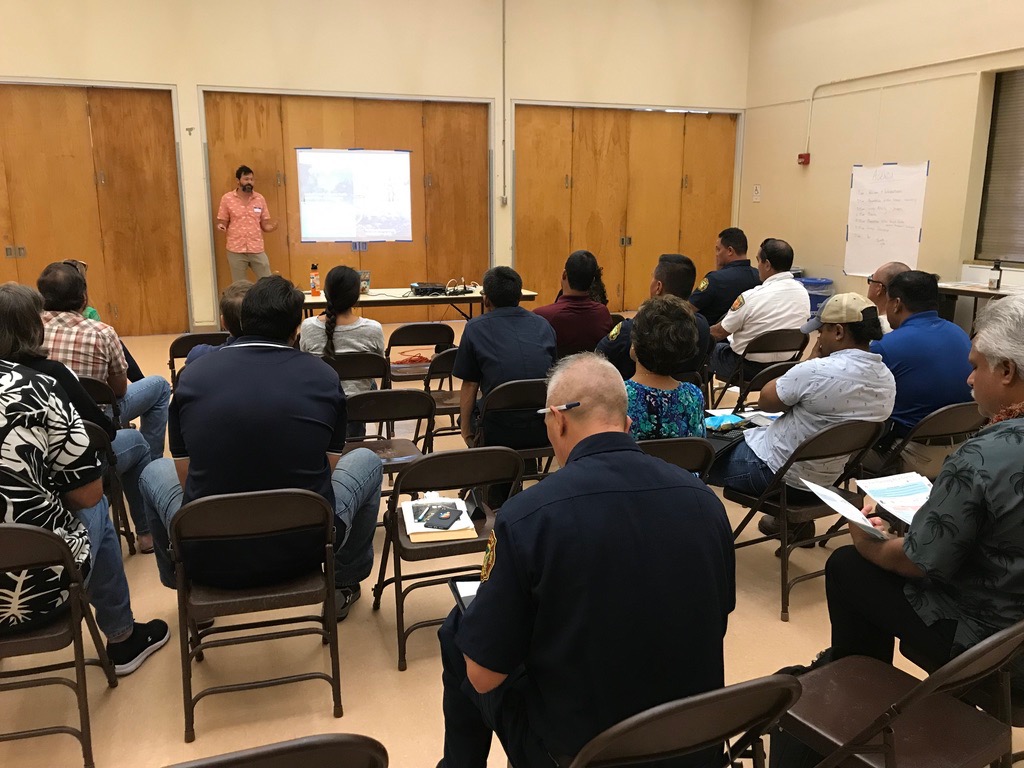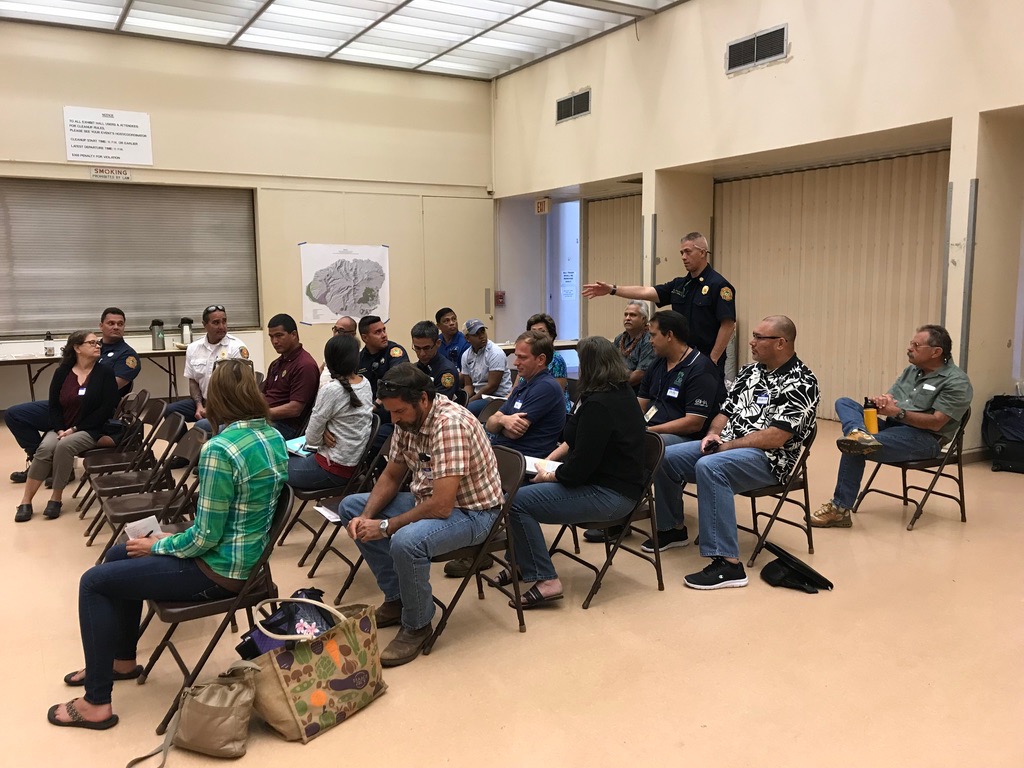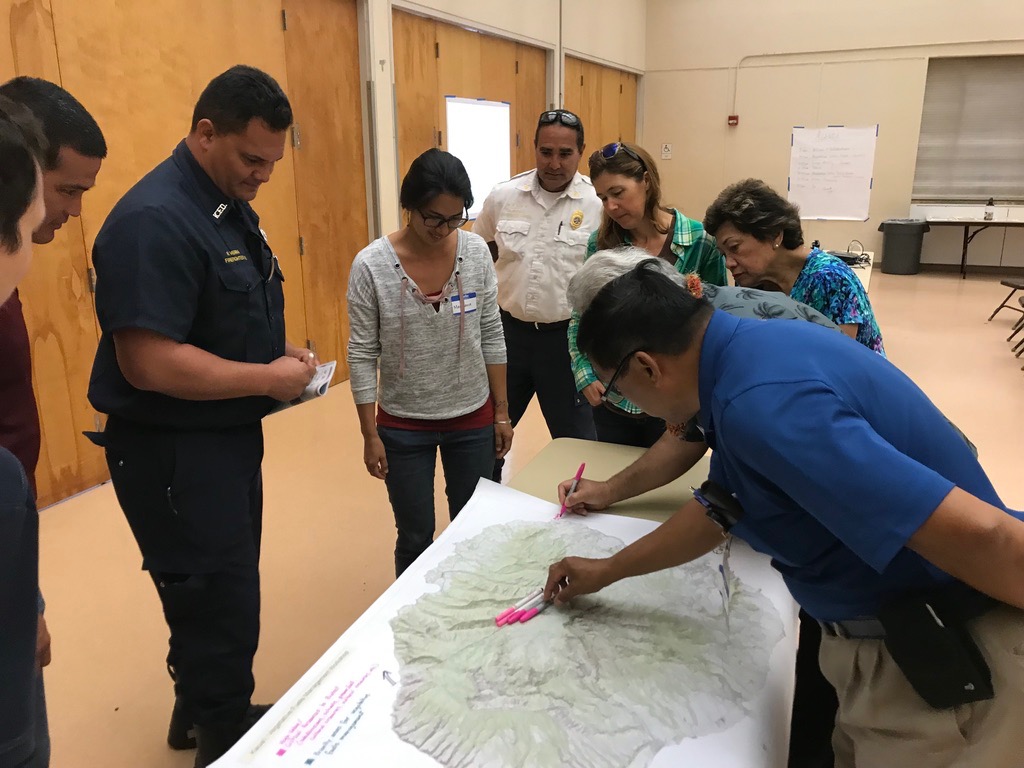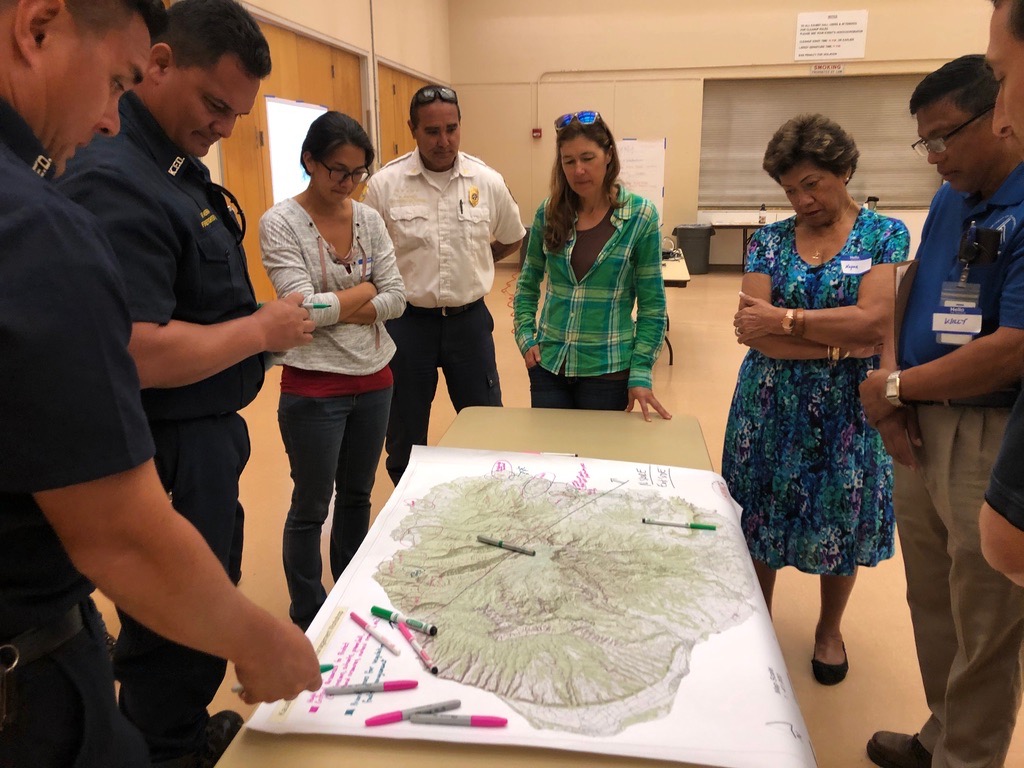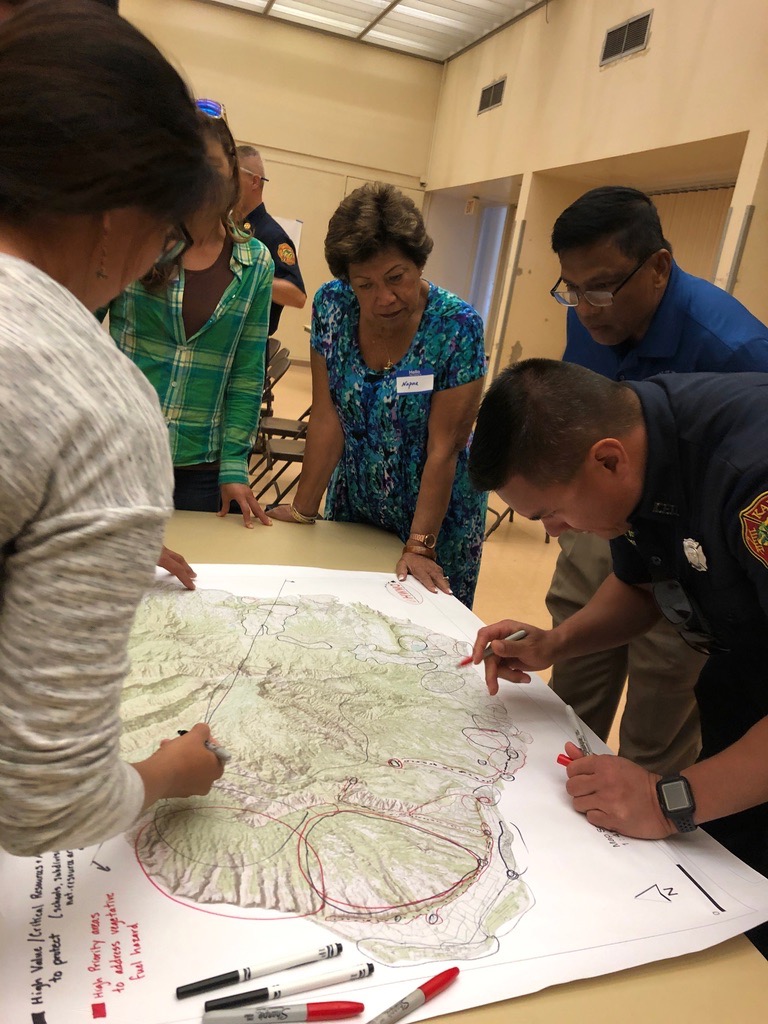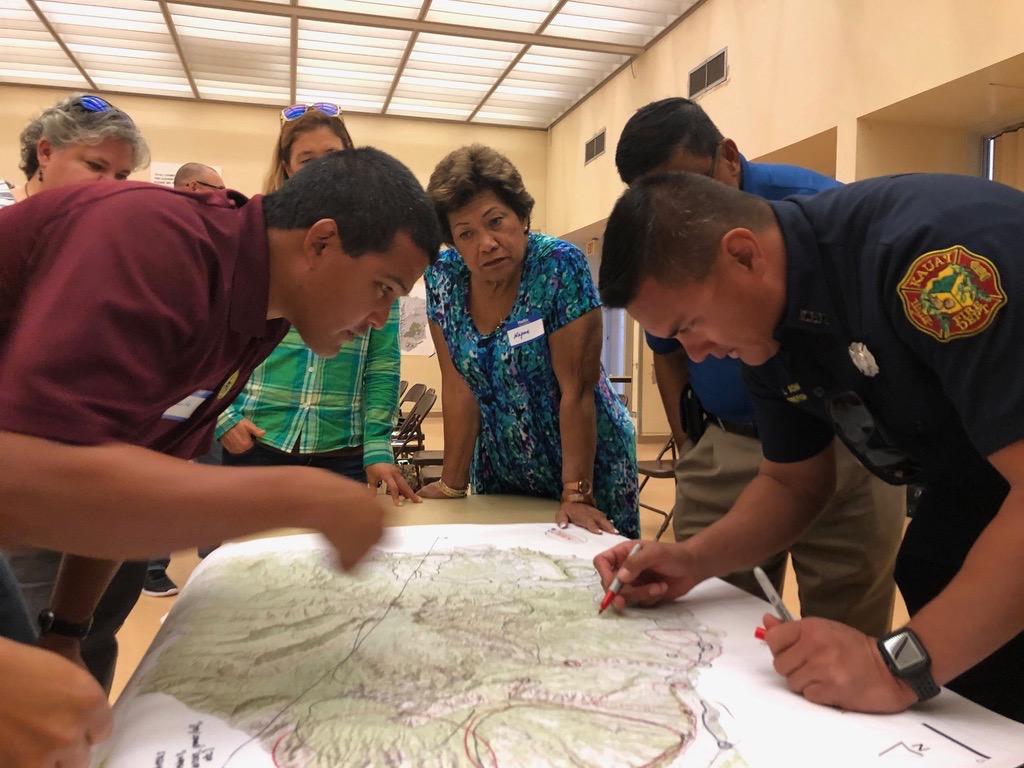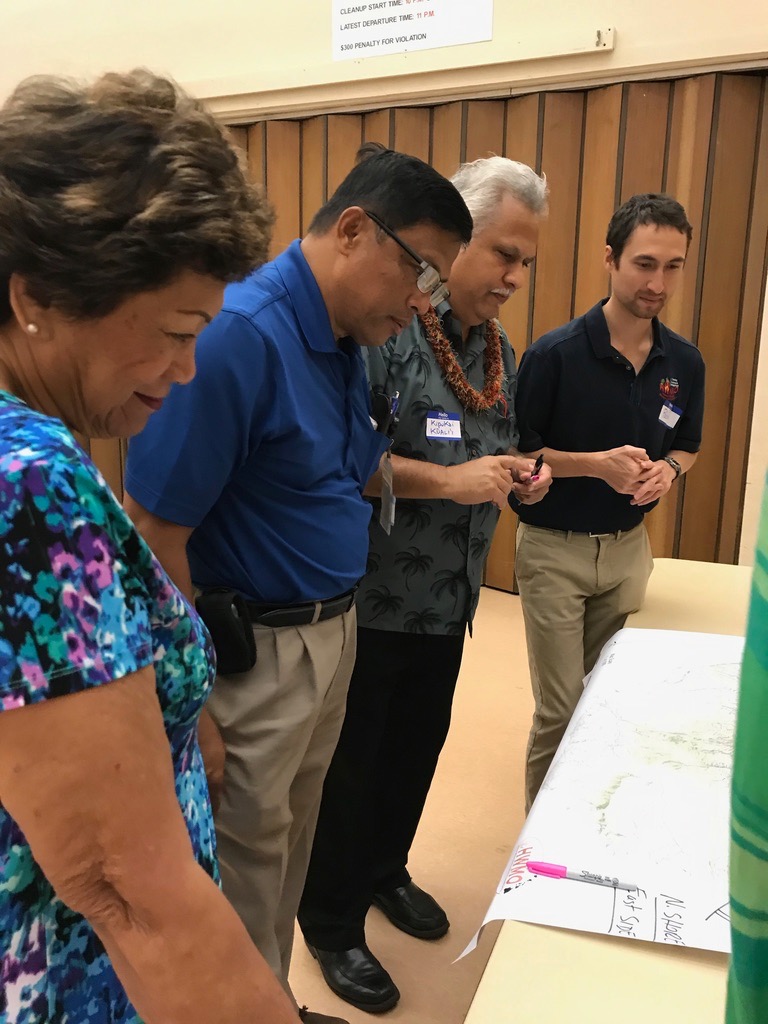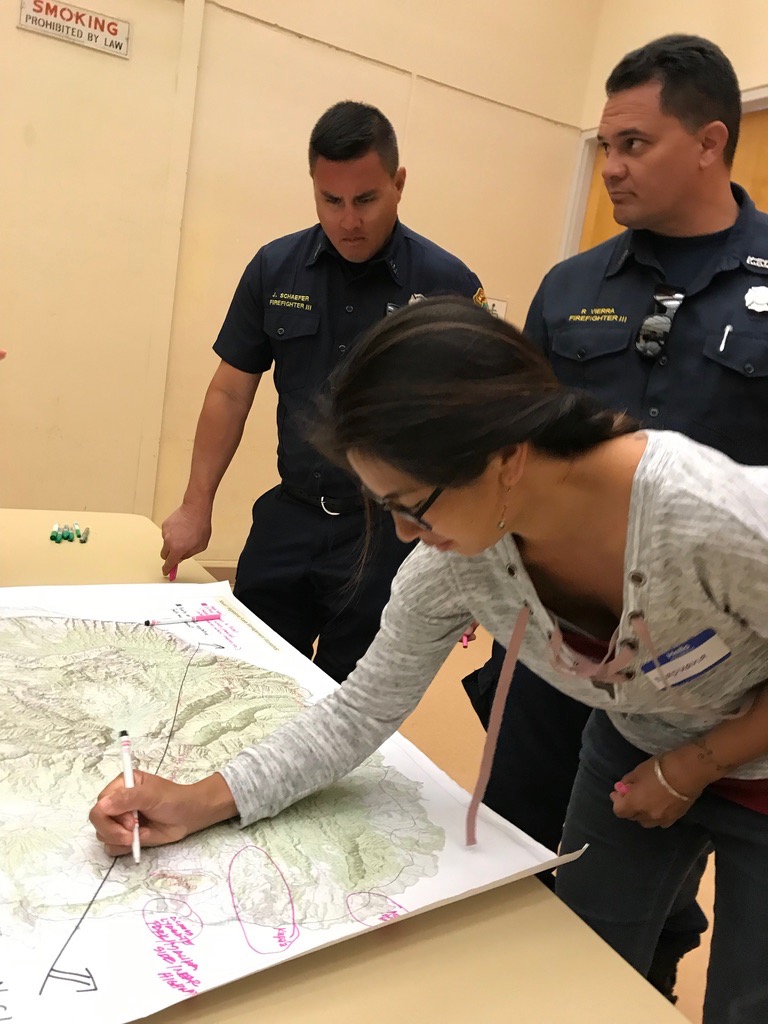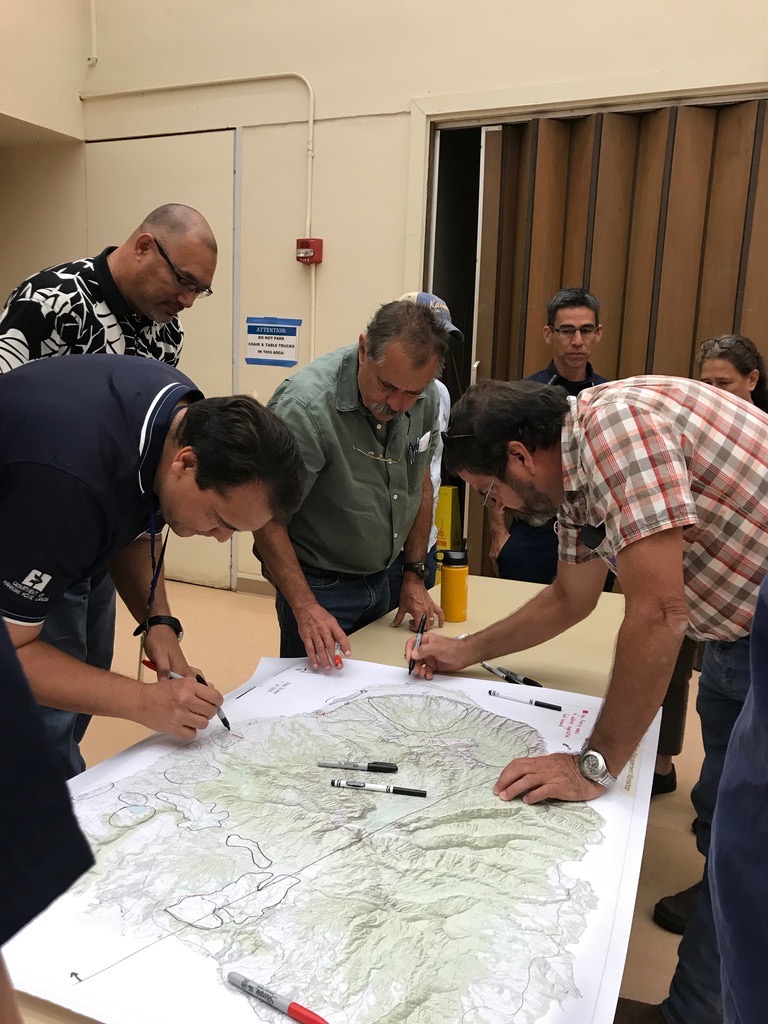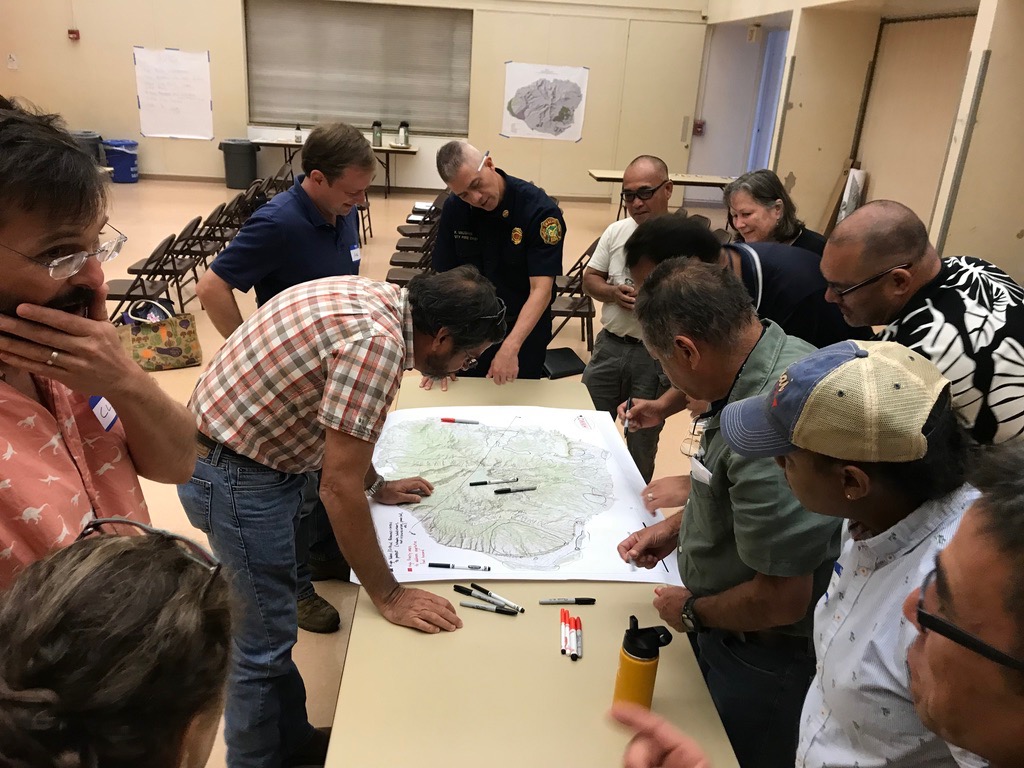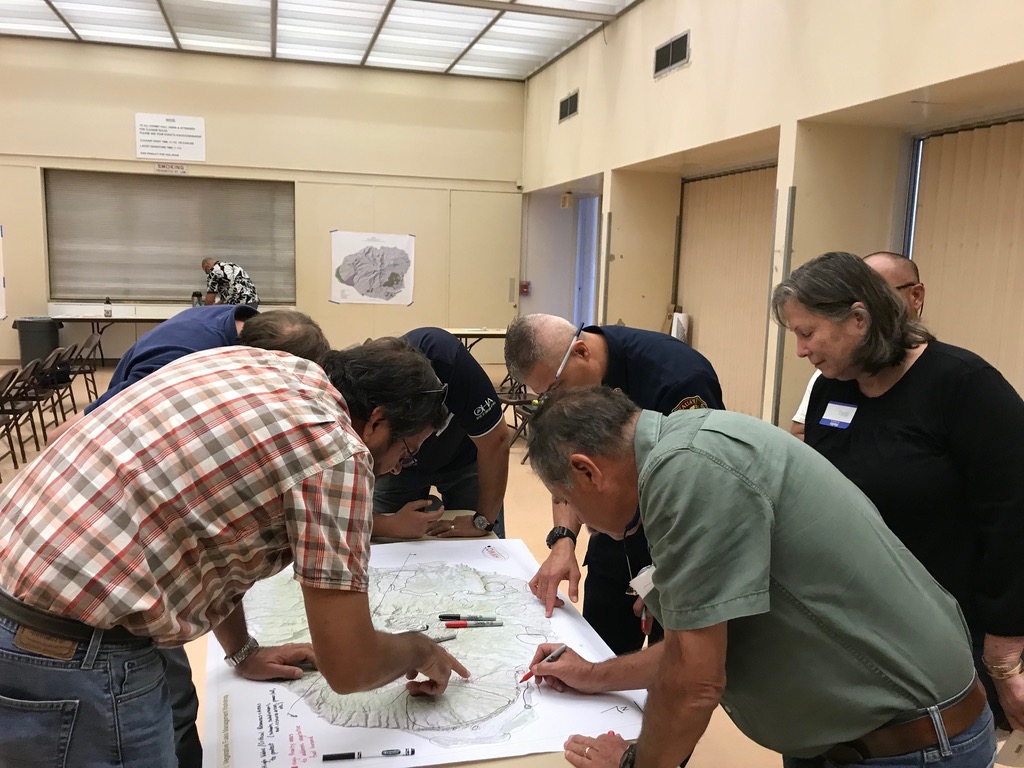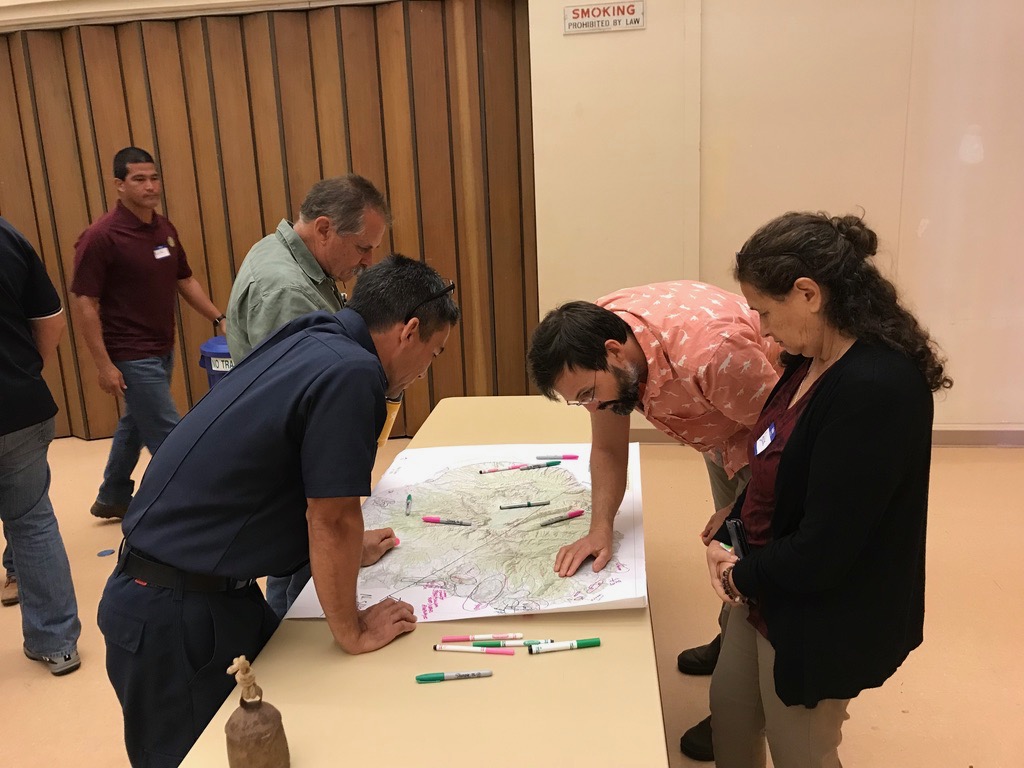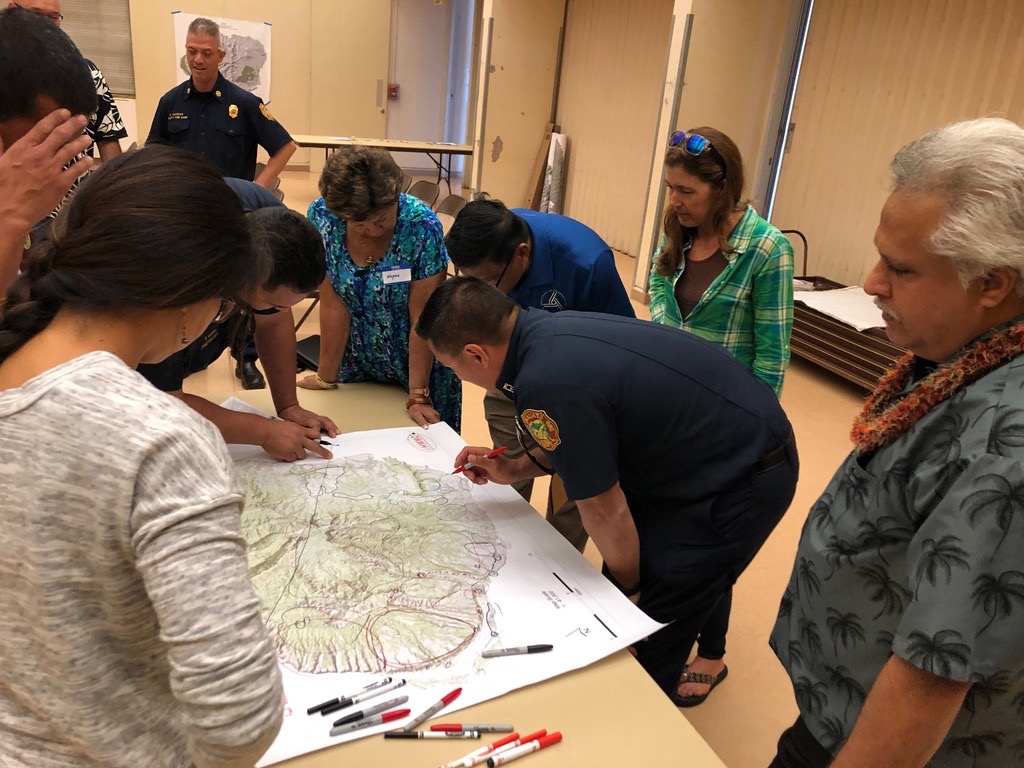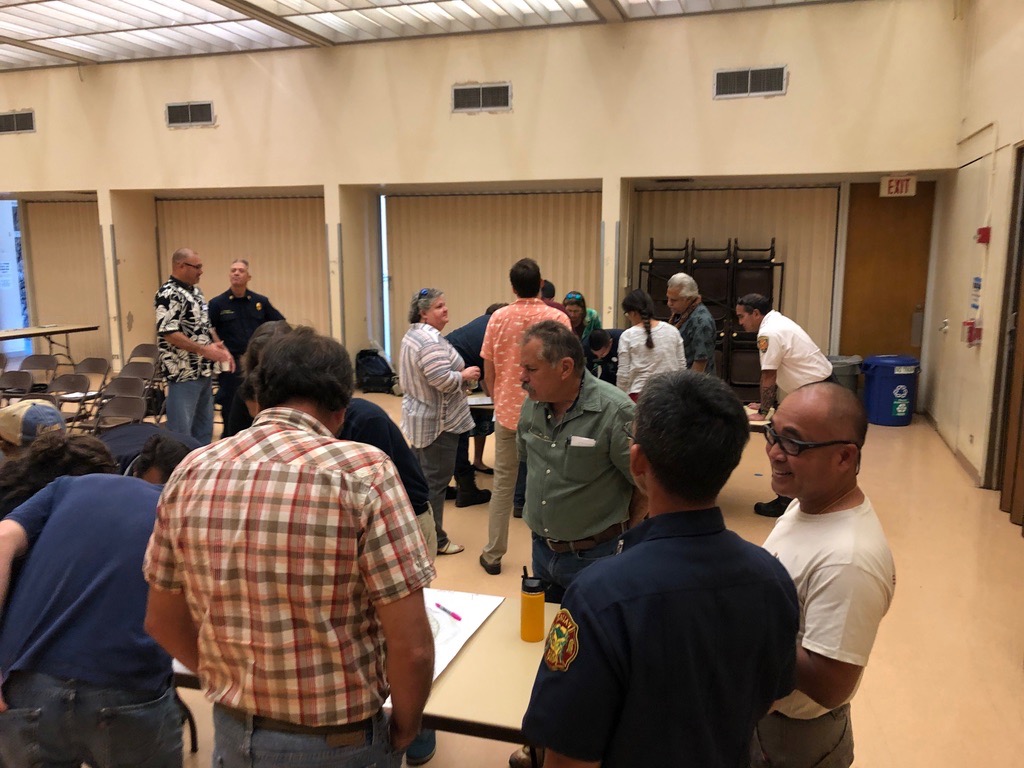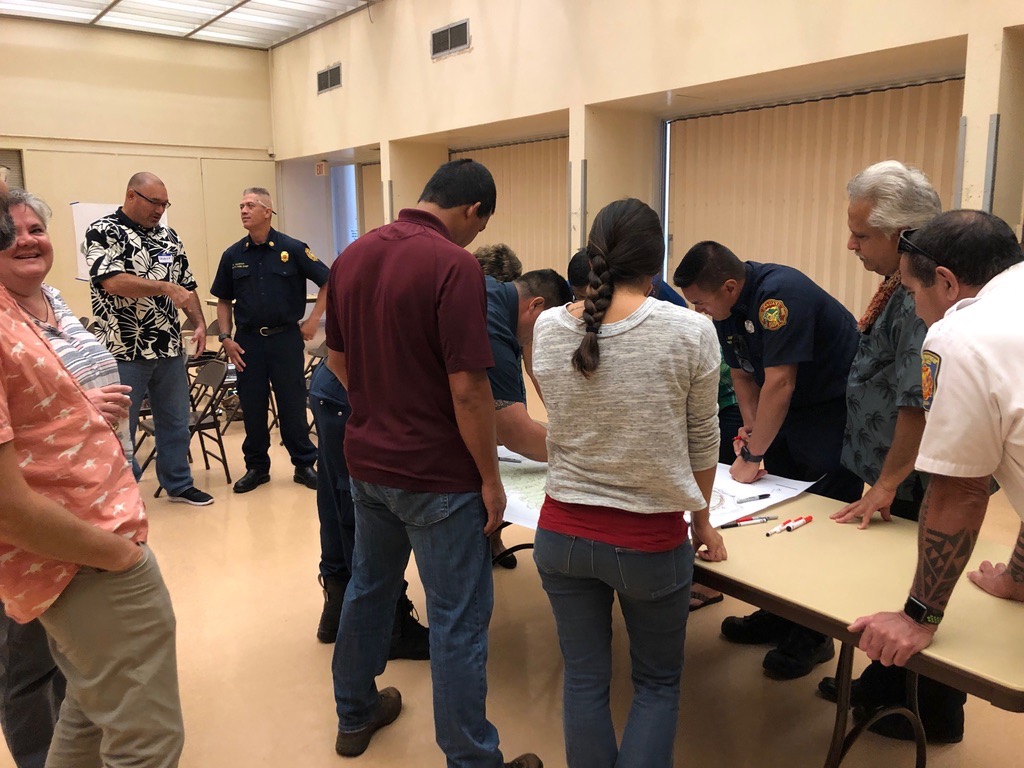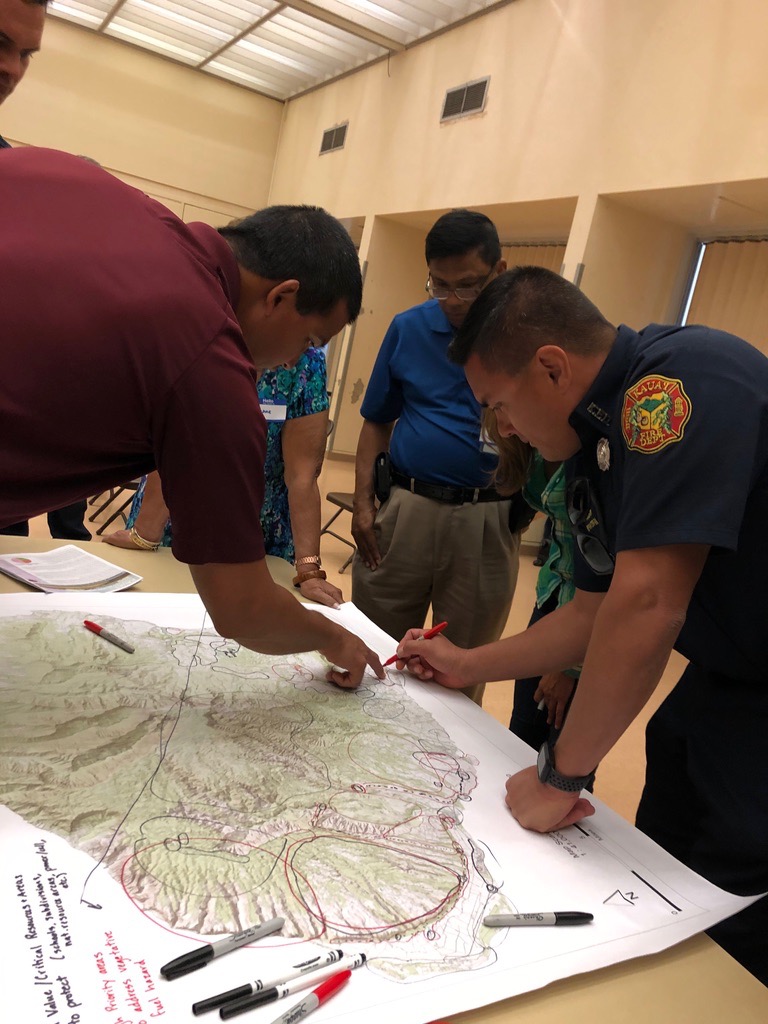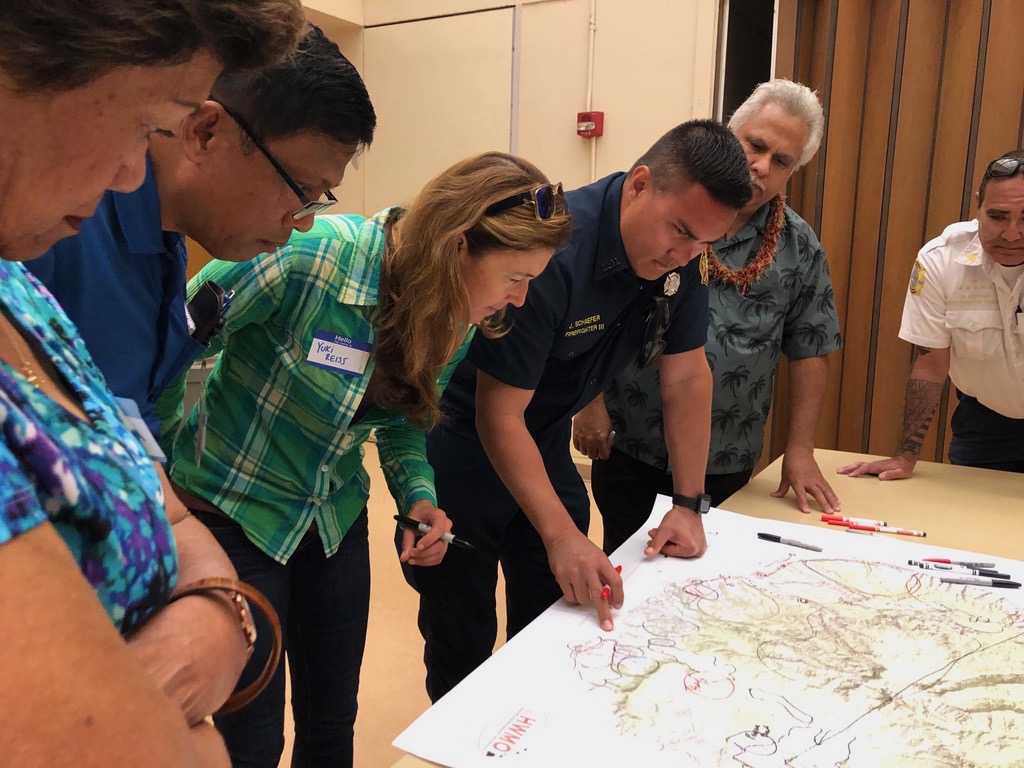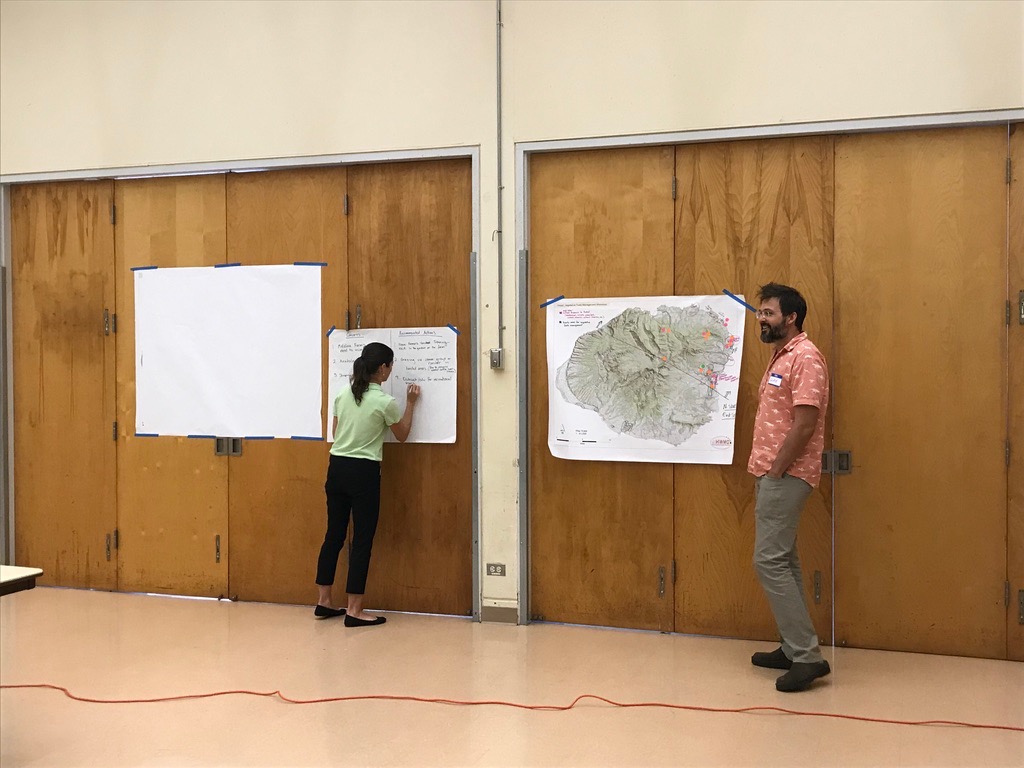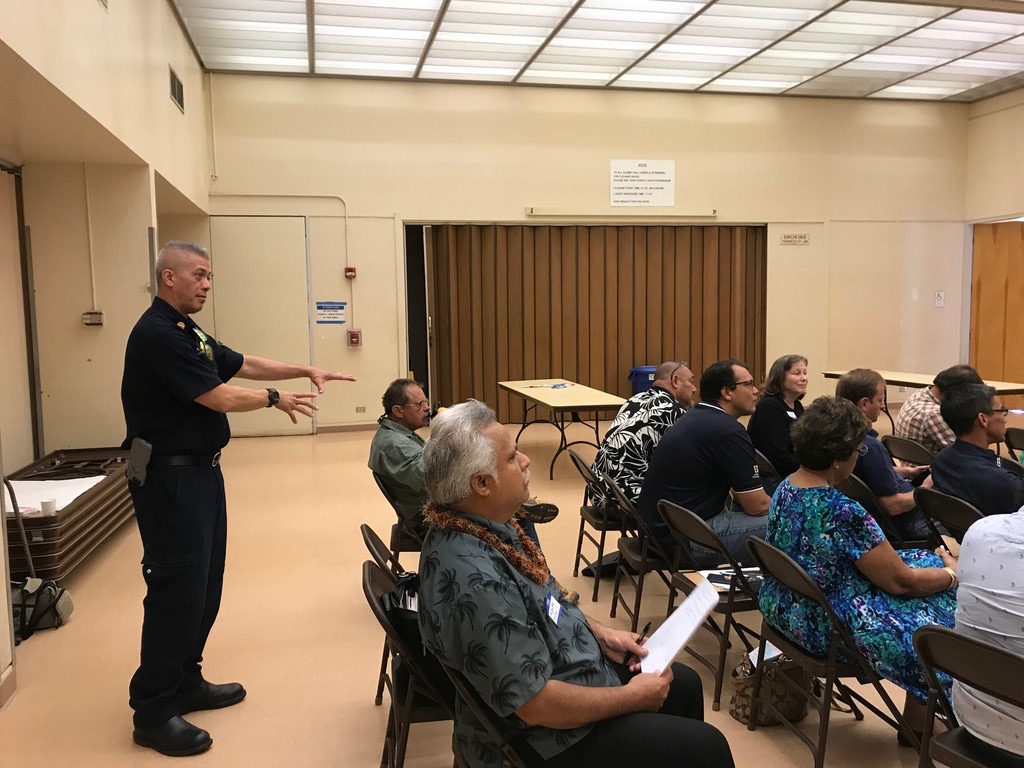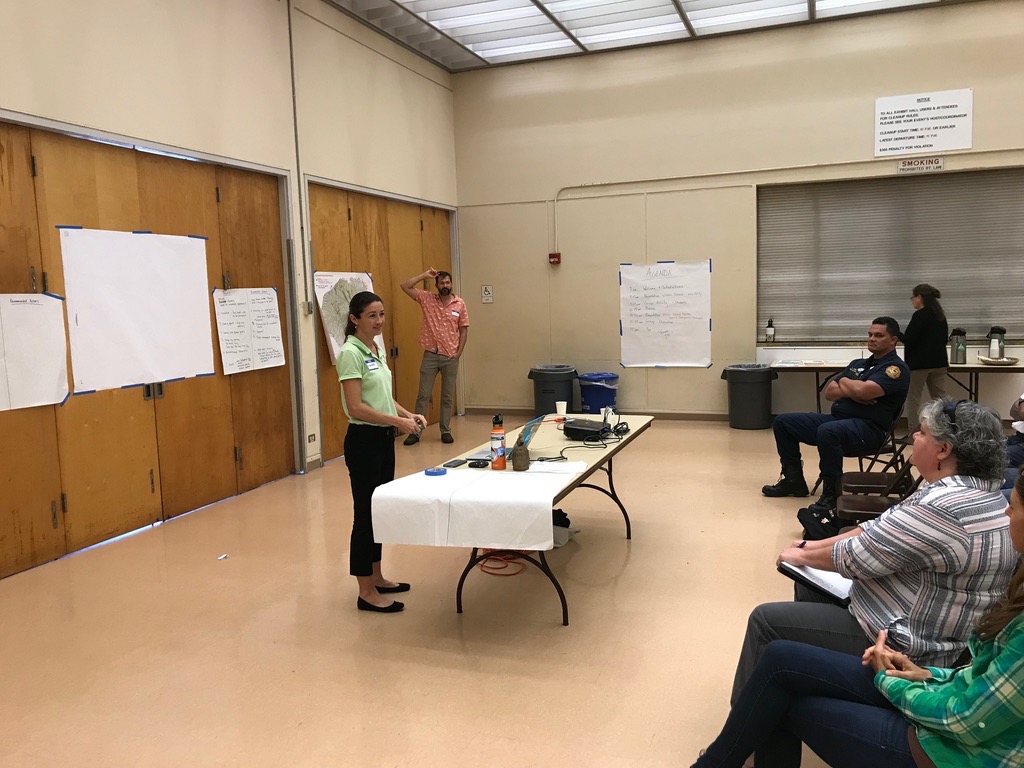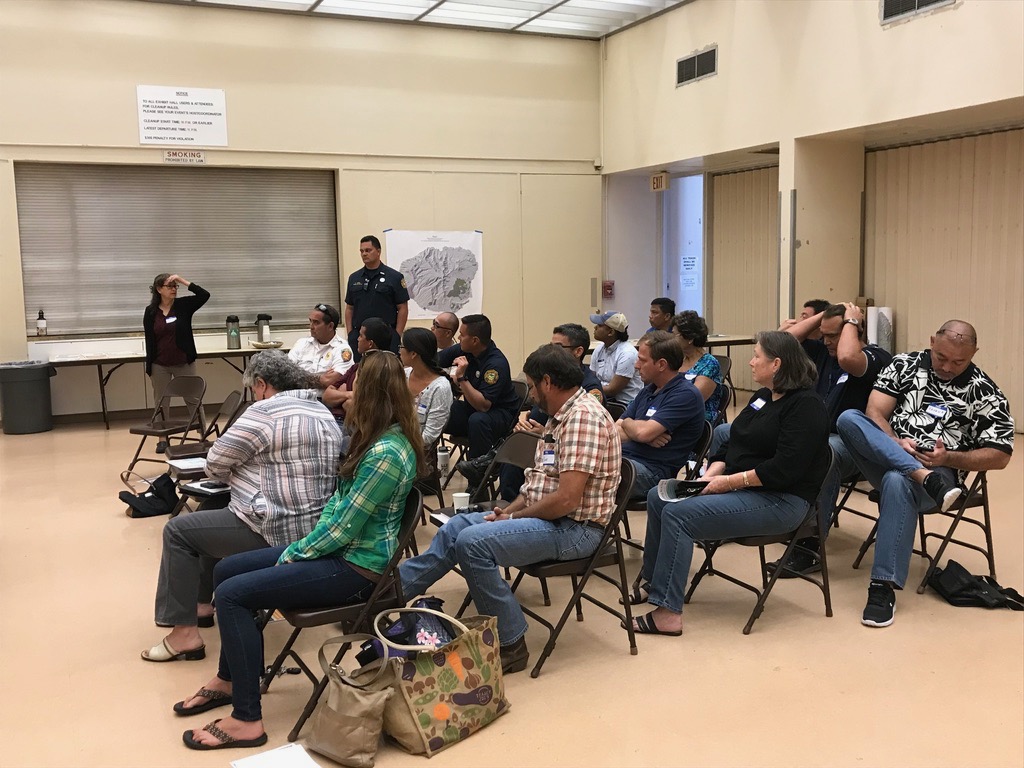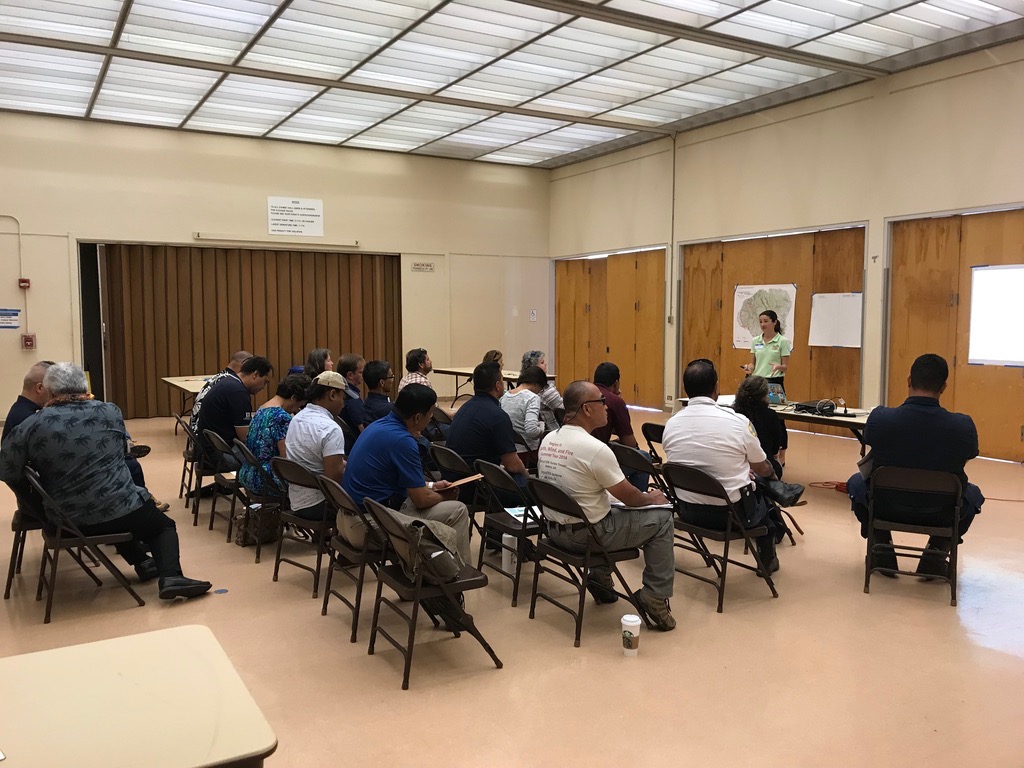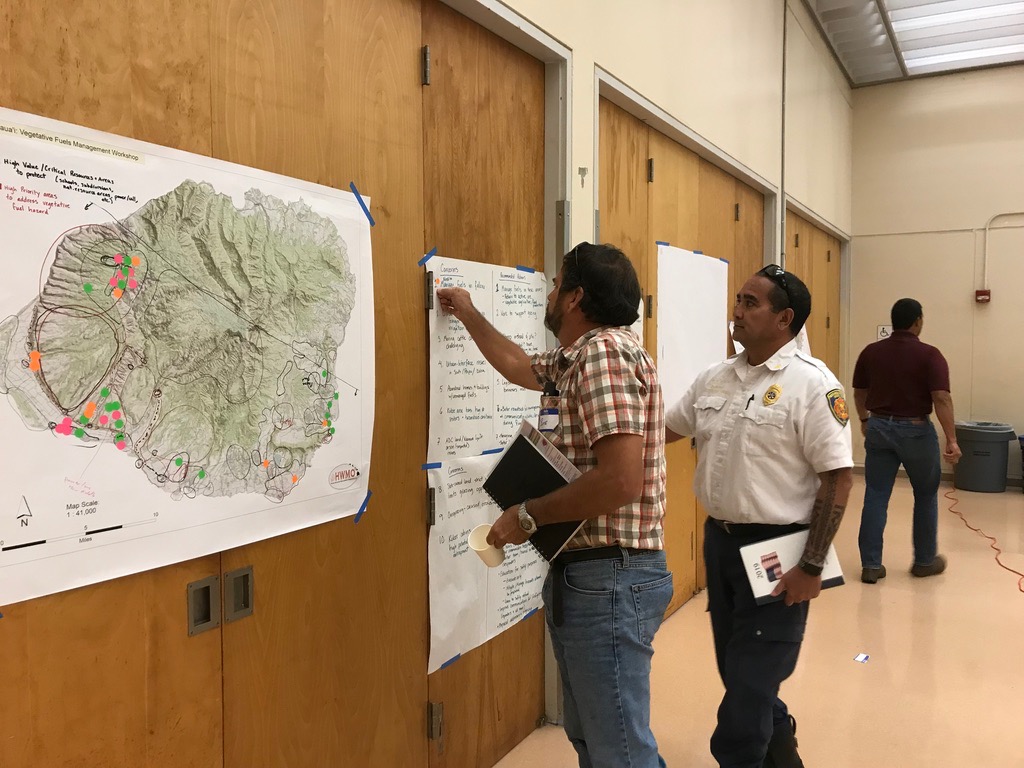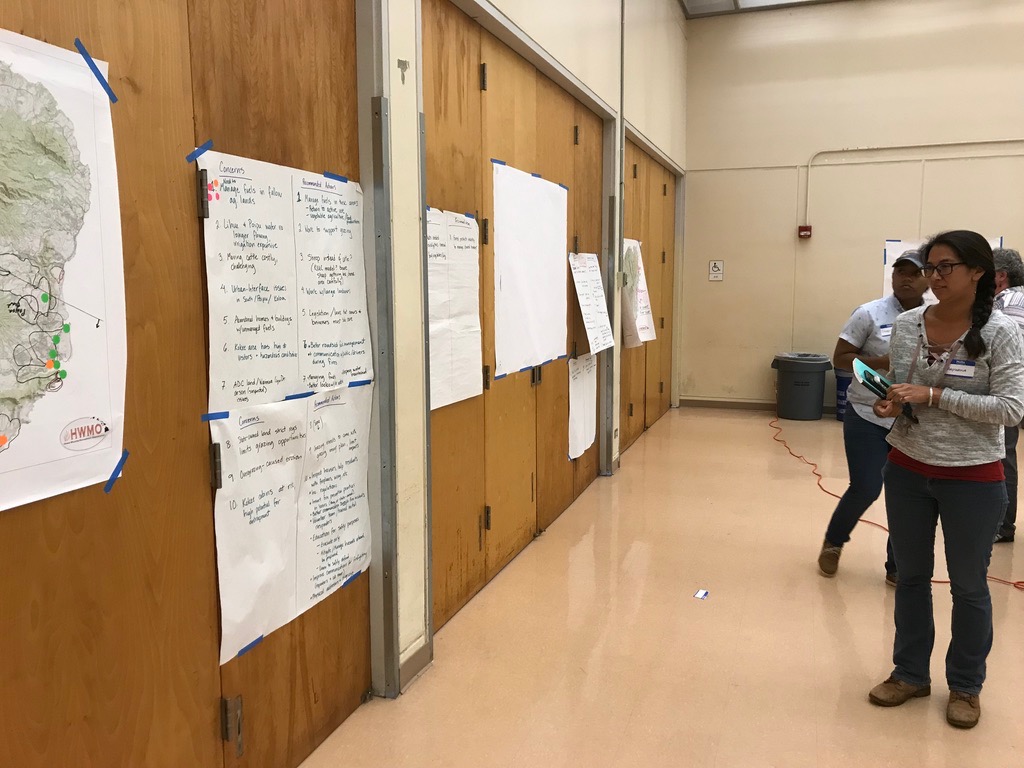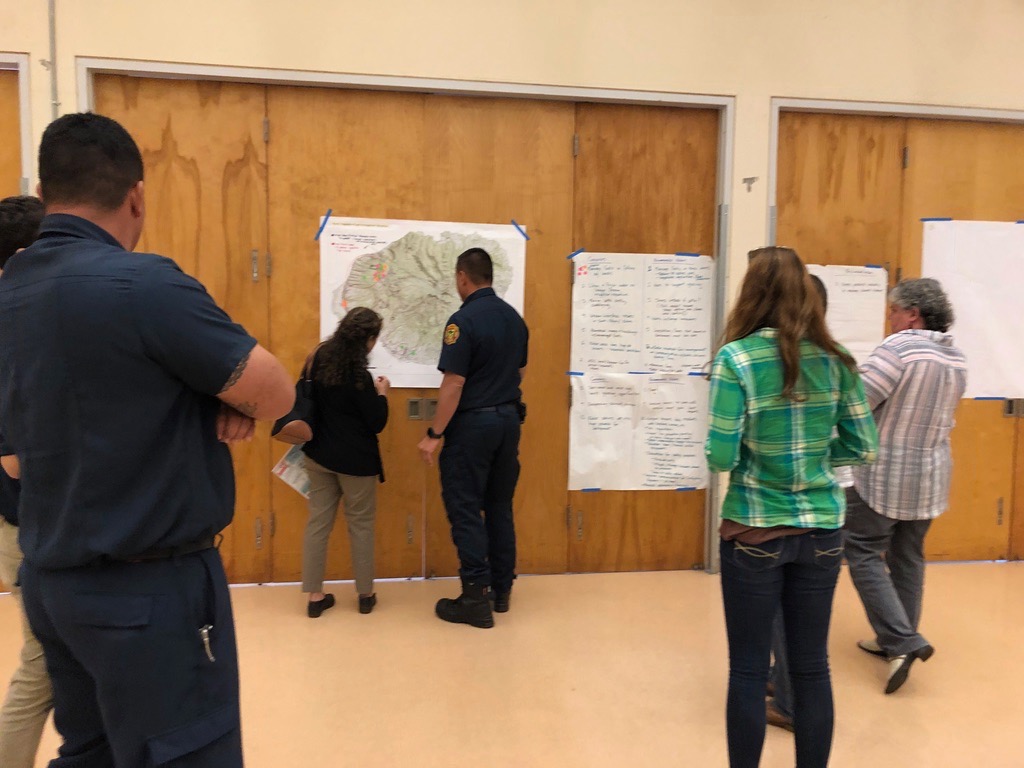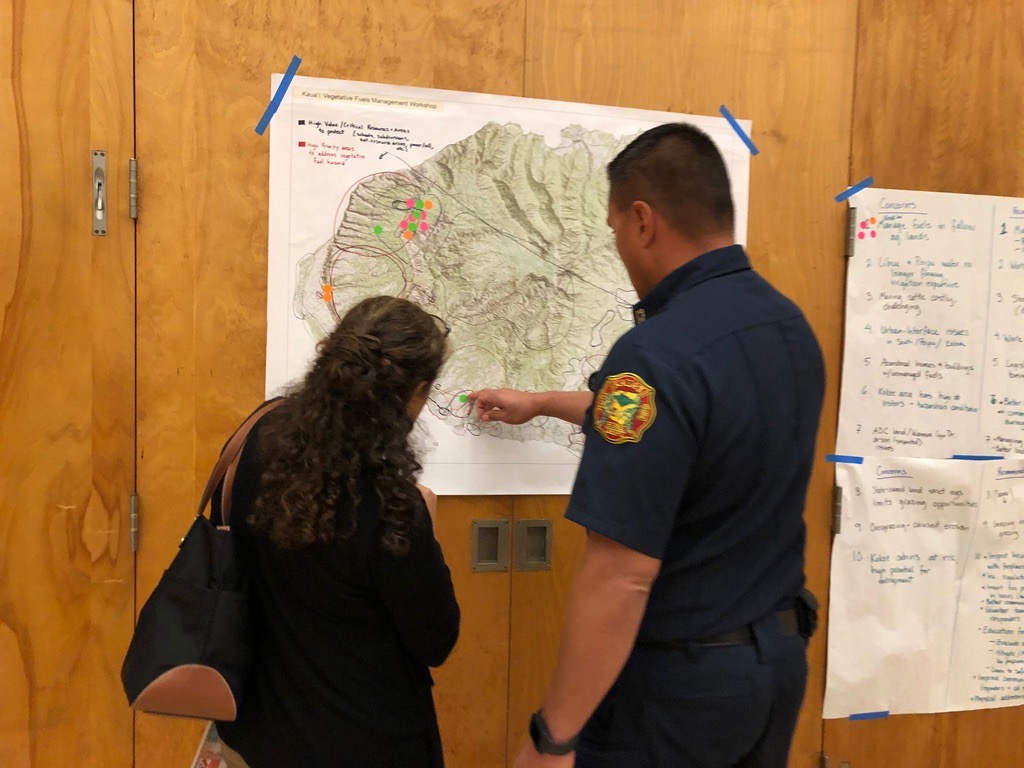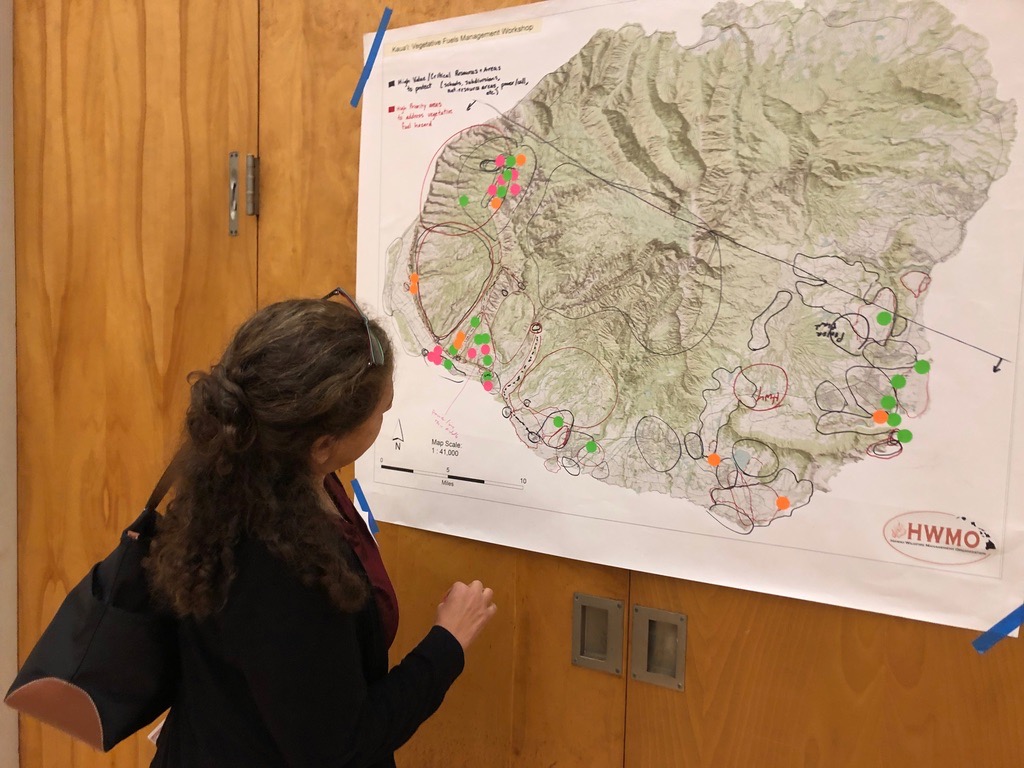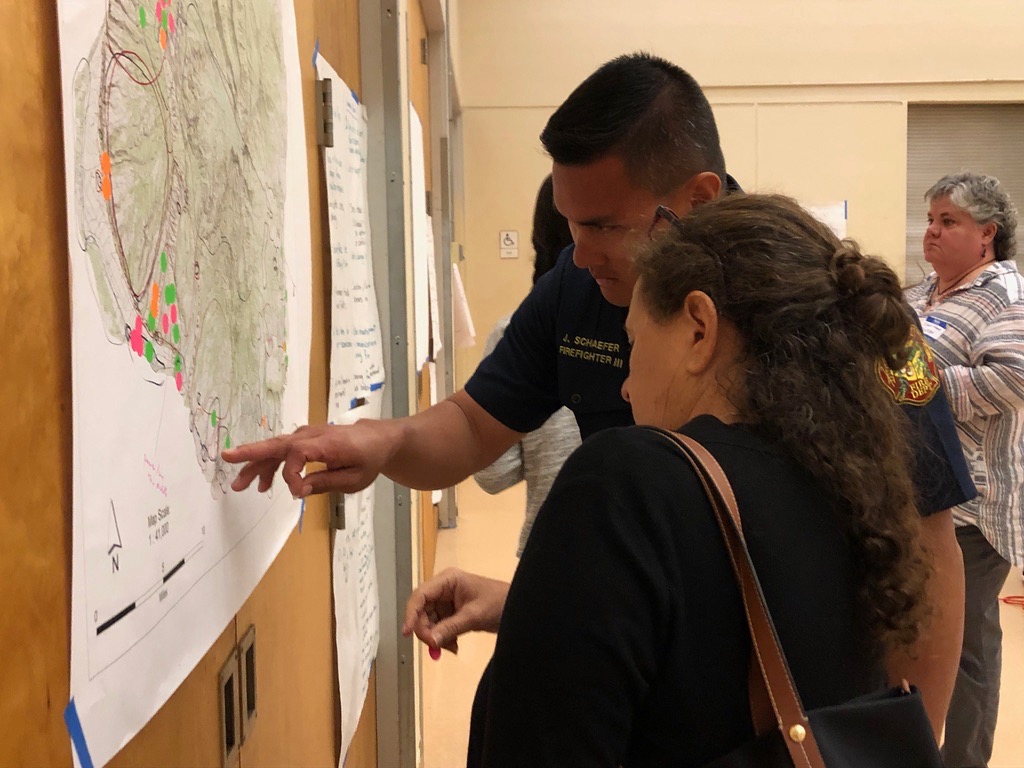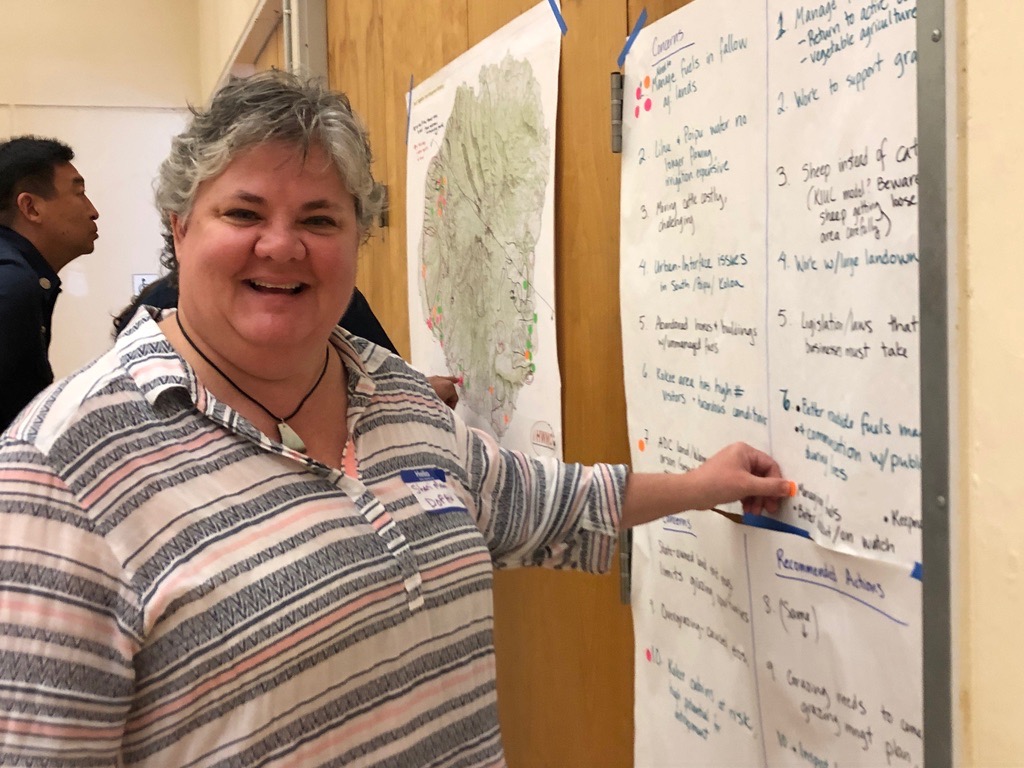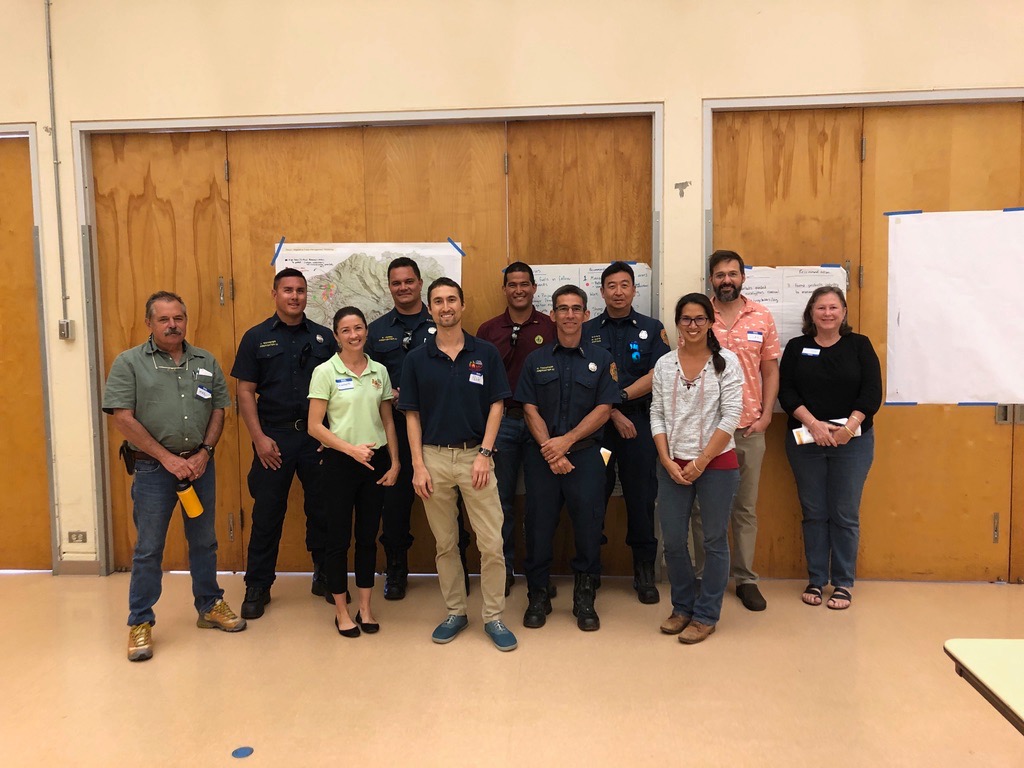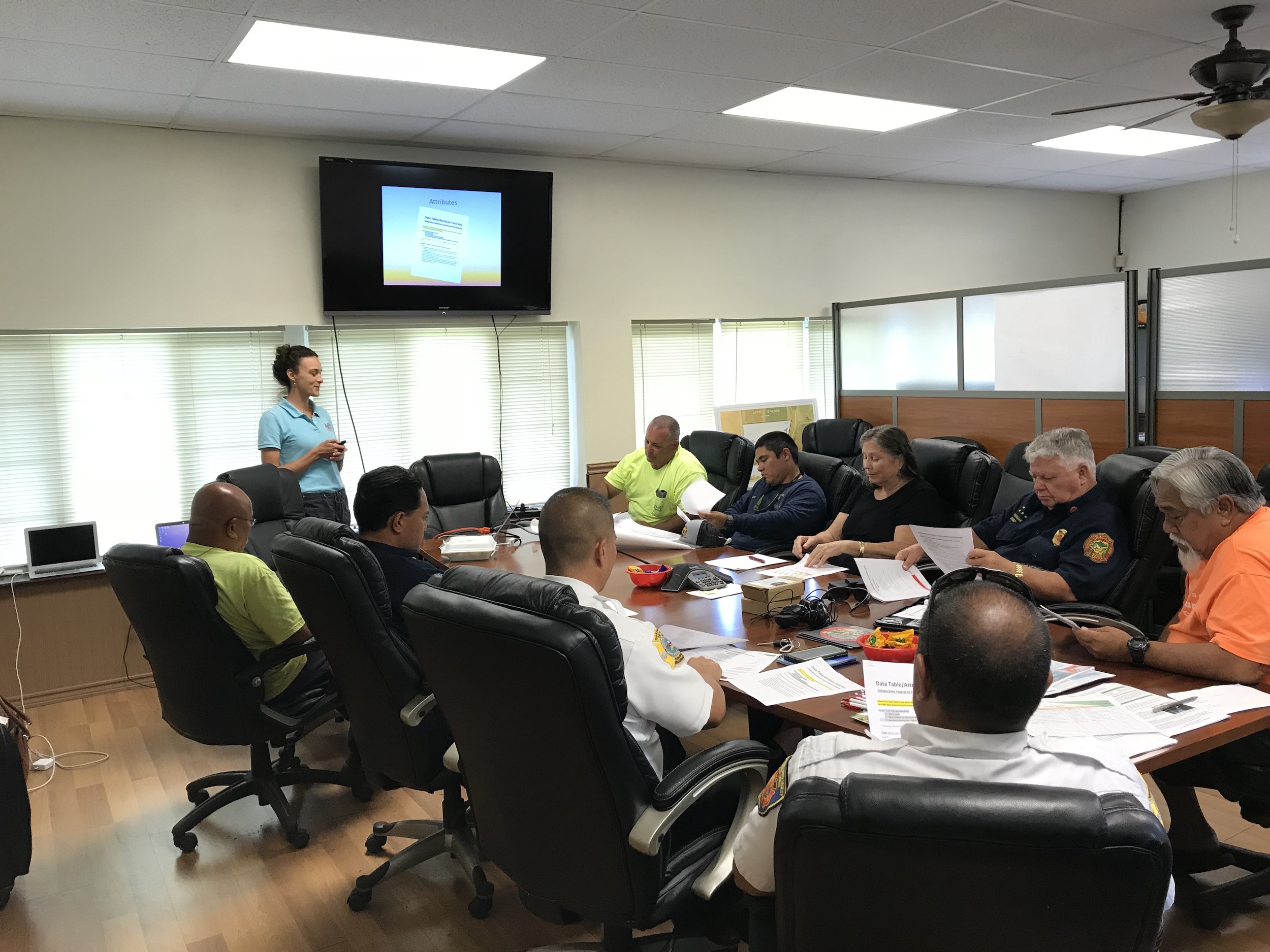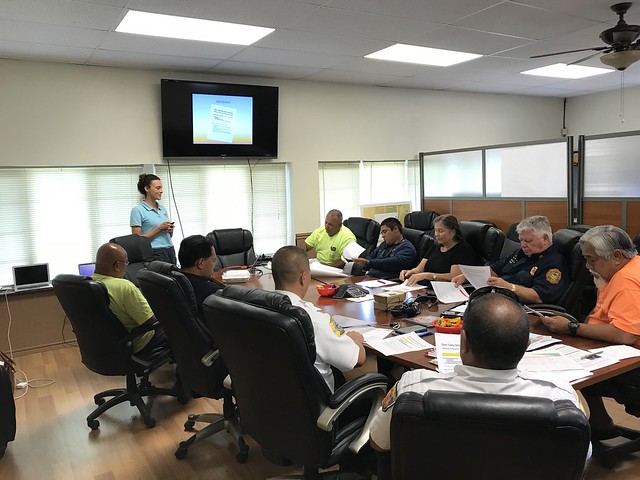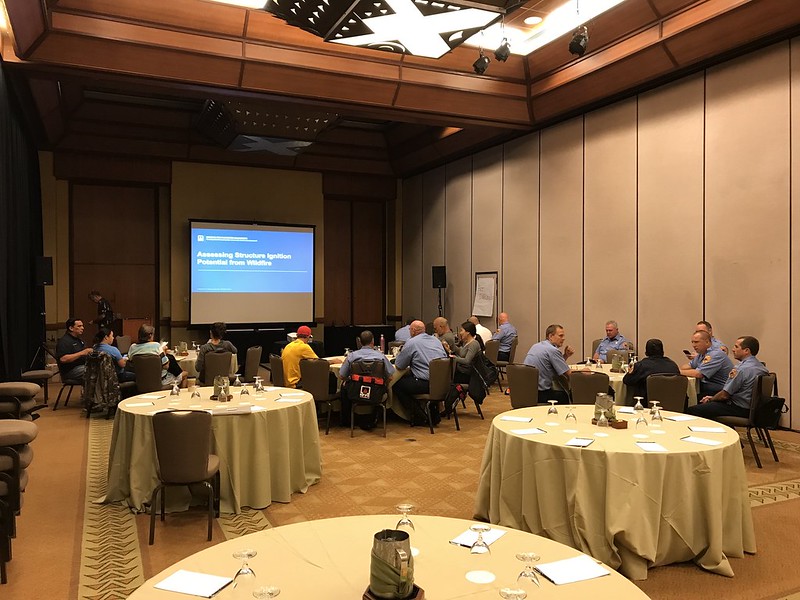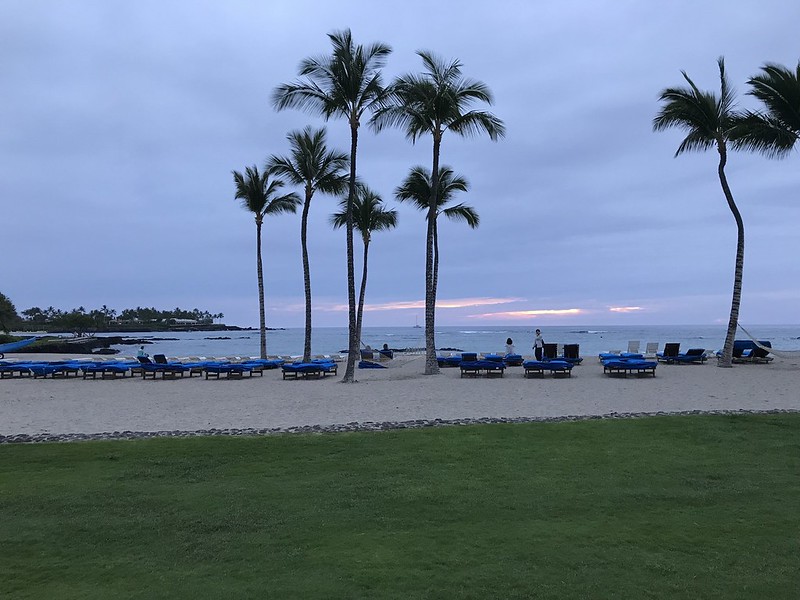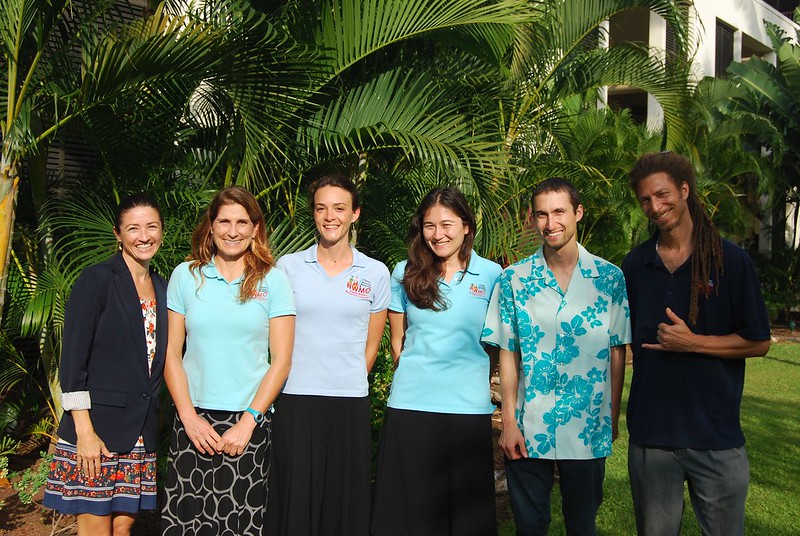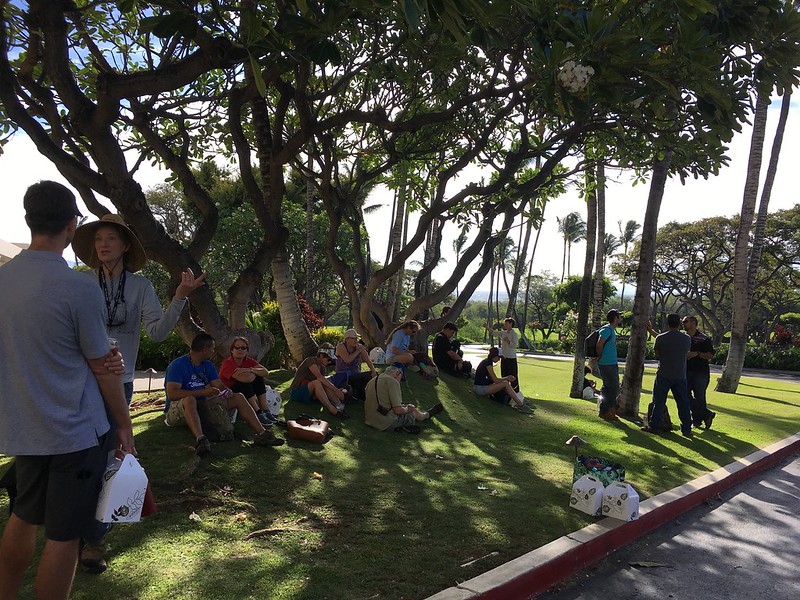Thank you to everyone who joined us!
Fire follows fuel. On February 21 at the War Memorial Convention Hall in Lihue, we convened a large group of 23 people on Kauai representing a patchwork of different agencies, groups, and organizations across a variety of fields to come together to plan for collaborative, large-scale vegetation management to reduce wildfire risks throughout the island. This was part of a series of workshops on Oahu, Kauai, and Hawaii Island we held in February on this matter (we had a similar meeting on Maui in 2018).
During the workshop, participants:
Checked out the results of recent efforts to map current management of hazardous vegetative fuels (thanks to all of the information that partners contributed).
Identified and discussed shared regional fuels management priorities to mitigate the risks of wildfire across our island landscapes through a facilitated series of small and large group conversations.
Dr. Clay Trauernicht presenting on fuels management strategies.
Voting for priority project ideas.
Marking values at risk and areas for fuels treatments.
The knowledge and priorities of the participants will contribute to planning next steps in the ongoing collaboration to manage vegetative fuels to reduce wildfire and protect our communities and natural resources.
We are all in this together and it takes all of us!
Stay tuned via our website, social media, and e-newsletter (sign up at the bottom of this page) for final project-related products before this summer.
Mahalo DOFAW, UH CTAHR Cooperative Extension / Pacific Fire Exchange for co-organizing with us.
Special thank you to Chief Kilipaki Vaughan of Kauai Fire Department, Chief Akiyama of Navy PMRF and Councilmembers Kipukai Kualiʻi and Felicia Cowden for joining us and supporting this important work.
